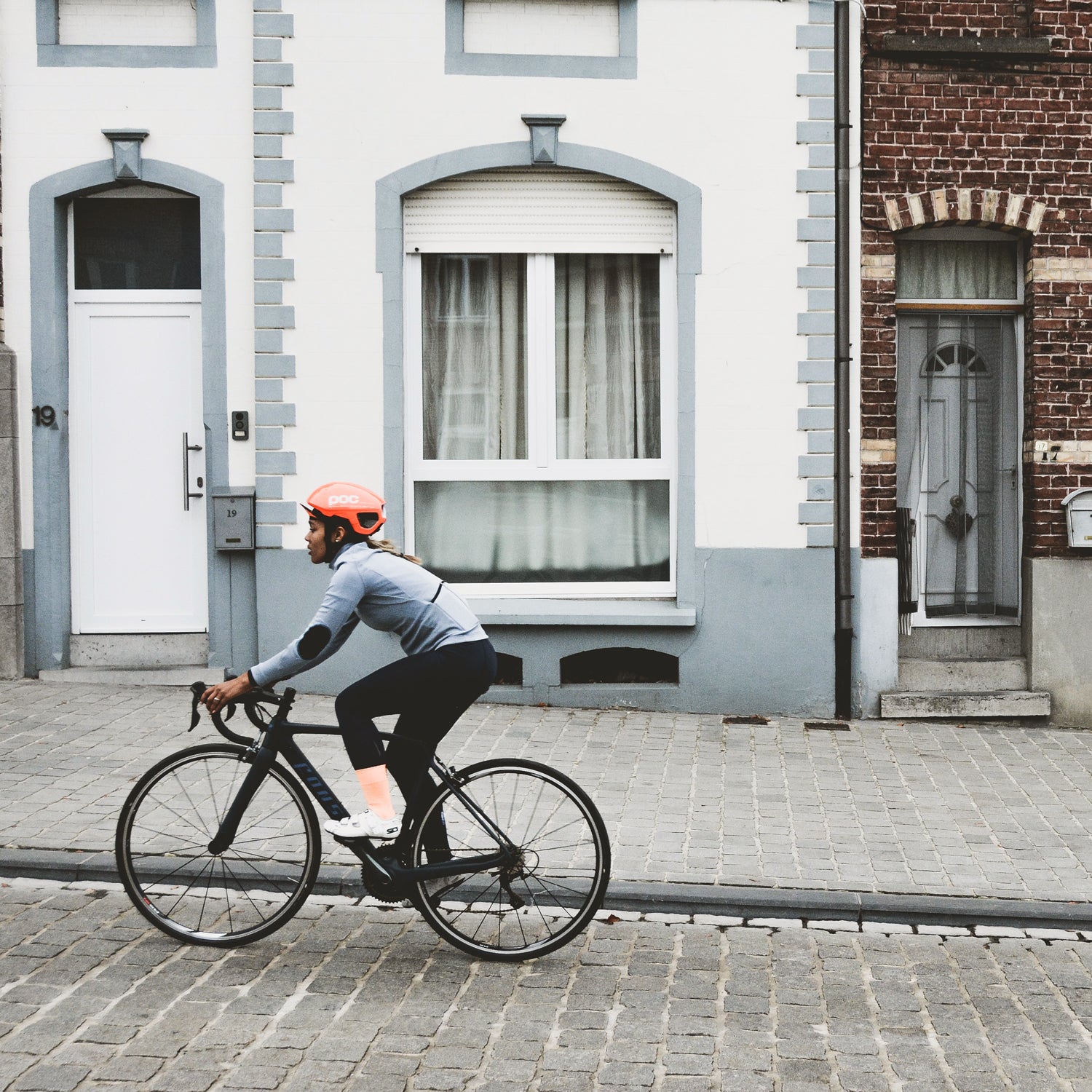ThereÔÇÖs a thatÔÇÖs been making its way around advocacy circles for awhile now. ItÔÇÖs a typical city streetscape, only the street itself has been replaced by a bottomless canyon. Meanwhile, inches away, pedestrians cling to narrow sidewalks and traverse the chasm via treacherous gangplanks (crosswalks). It immediately drives home the modern-day state of affairs in cities across America and around the world: drivers own the streets, forcing everyone else into the margins. Should you place a foot in the wrong place and briefly stray from your meager spatial allotment, the price you pay is death.╠ř╠ř
Many of us donÔÇÖt see just how much space weÔÇÖve given over to drivers for the simple reason that itÔÇÖs been this way for as long as most of us have been alive. But now that motor vehicle traffic has temporarily slowed to a trickle due to the pandemic, itÔÇÖs become obviousÔÇöand doubly so since, on top of everything else, everybody whoÔÇÖs not in a car is supposed to stay six feet away from one another. Thanks to those narrowed sidewalks (New York City in the early 20th century to make way for auto traffic), if youÔÇÖre trying to adhere to the guidelines by steering clear of passersby then youÔÇÖve got no other choice but to walk in the street. Sure, pedestrians spilling into the street is in New York City,╠řbut when there are barely any cars, weÔÇÖre able to see how absurdly car-centric our cities are.╠ř
Given this, cities have begun to recognize the need to close certain streets to trafficÔÇöor, more accurately, open certain streets to people. In Italy, the city of Milan to ÔÇťfend off a resurgence in car useÔÇŁ by expanding cycling and walking space. In Germany, Berlin moved quickly to install pop-up . Here in the United States, in Oakland, California, mayor Libby Schaaf over 70 miles of streets ÔÇťso that bicyclists and pedestrians can spread out and take in fresh air safely,ÔÇŁ she told the San Jose Mercury News. And in New York City, after some , last week mayor Bill de Blasio that the city will open up to 100 miles of streets to alleviate crowding in parks.
While there have been about the program in Oakland (some residents said they received no notice and simply woke up to barricades and ÔÇťnot a thru streetÔÇŁ signs, and certain closures have caused conflicts at intersections), the the reaction to it has been ÔÇťlargely positiveÔÇŁ and is soliciting community feedback on closing additional routes to car traffic. And while New York CityÔÇÖs own program has only just begun to take shape, all you have to do is stick your head out the window on a sunny day to see lots and lots of people taking advantage of the reduction in traffic to ride bikes for both transport and pleasureÔÇöa phenomenon thatÔÇÖs also happening all over the country, everywhere from to . For advocates who have long been trying to sell city dwellers╠řon the advantages of car-free (or at least car-lite) streets, theyÔÇÖve finally gotten their showcase.
But what happens when everything opens up again? Will the individuals and families who have been riding continue to do so? Will they join advocates in demanding that cities rebalance their streets so that they can feel safe and comfortable to walk and ride with their children? Or will the bicycle simply fade away, a dalliance that was specific to a certain time and place but no longer relevant, like a high school boyfriend or the bong you used to own in college?
Alas, thereÔÇÖs reason to believe the latter scenario may be more likely. In fact, itÔÇÖs entirely possible car use will come back at us with shocking speed and intensityÔÇölike a boomerang, or the waistband on a brand-new pair of underpants, or a . Traffic in China, and Wuhan is seeing . In New York, the Metropolitan Transportation Authority (MTA)ÔÇöthe largest public transportation agency in the United StatesÔÇöhas seen ridership decline by over 90 percent, and could soon find itself .╠řAnd as the shutdown decimates the economy, de Blasio has proposed that were designated street redesign and bike lane programs. Meanwhile, all over the United States, and the are insisting that going forward we should expect a ÔÇťnew normalÔÇŁ in which we rethink everything from to to . This could include closing streets to traffic in order to accommodate restaurant diners, as is . Or, it could involve an increased focus on ÔÇťdrive-inÔÇŁ business models, as in a recent press conference. (ItÔÇÖs important to remember how deeply entrenched car culture is in America, and that al fresco dining doesnÔÇÖt necessarily portend a fundamental shift in the way people choose to travel.)
Of course, plenty of predictions and assumptions concerning the coronavirus . we need to overhaul our society, and once all this is over the new normal could turn out be… well, like the old normal. Regardless, between the lingering fear, the economic devastation, and the consequent disinvestments in transit and bike lanes, at least in the short term itÔÇÖs equally likely that will contemplate shifting to cars for day-to-day transportation. (Historically low and will only sweeten the deal.) This in turn will make bicycling for transportation a less attractive proposition for the people who werenÔÇÖt already doing it pre-pandemic, as at least half the people in America who wish they could commute by bike donÔÇÖt . As for those open streets victories in Oakland and New York, they were predicated on the idea of facilitating social distancing, a concept that will one day go the way of those Cold War-era ÔÇťFallout ShelterÔÇŁ signs you still see on old apartment buildings.╠ř
This will be a challenging time for bicycle advocacy for all of the reasons above, and it will only be compounded by the fact that advocacy organizations will be seeking funding and donations in a ravaged economy. While people will no doubt savor the open streets in New York City and elsewhere, what they crave most at this moment is normalcy. Instead of purchasing a car out of necessity, those who wish to reclaim streets from cars will have to exercise compassion and understanding. As of this week, 30 million Americans for unemployment benefits. New YorkÔÇÖs bike share program may be , but its parent company has also 17 percent of its workforce.
We still desperately need a ÔÇťnew normalÔÇŁ for our streets, but we also have to prepare ourselves for a long period during which our cities insist itÔÇÖs a luxury we canÔÇÖt afford.


